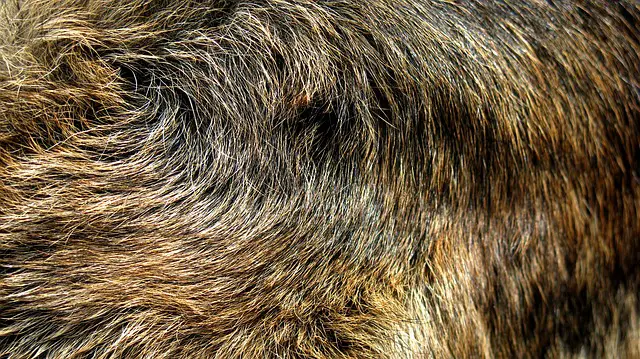We’ve already put together a guide outlining the different types of German Shepherds – we make mention of short and long haired GSDs in that guide.
But, maybe you been looking into the different German Shepherd coats, and you’re wondering about the difference between a single coat and double coat German Shepherd?
In this short guide we run you through the difference in the two.
We discuss what each coat is for, when each coat sheds, and how they relate to the different types and lengths of coats on a German Shepherd breed.
Let’s jump into it …
(NOTE: this is a general information guide only, and is not professional advice, or a substitute for professional advice. A qualified vet or animal expert is the only person qualified to give you expert advice in regards to your pet/s)
Difference Between A Single Coat and Double Coat German Shepherd
What Is A Single Coat, and What Is A Double Coat On A Dog?
Some dogs are naturally more of a single coat breed, whilst others tend to have a double coat.
Dogs that have a double coat have an outer coat (also called a guard coat), which tends to be wiry and acts to protect the dog’s skin and repel against water, dirt and other external environmental factors.
They also have an undercoat, which is softer, thicker and wooly (as opposed to wiry).
This undercoat acts as more of an insulating coat for hot and cold weather.
Especially in the winter the undercoat gets thicker to give the dog more warmth.
Dogs with a single coat only have an external wiry coat, without the insulating undercoat.
These dogs are considered to be less suitable cold weather dogs.
Are German Shepherds Single Coat, or Double Coat Breed Dogs?
German Shepherds are generally double coat breed dogs.
However, there are different lengths of German Shepherd coats, and some are missing an undercoat.
Unofficially, the range of coat types on a German Shepherd can be:
Short length coat with an undercoat (around 1 inch in length)
Medium length coat with undercoat, often referred to as a plush coat.
This is the most common coat and is the desired type of coat for dog shows (around 1 to 2 inches in length)
Long length coat with undercoat (around 2 inches or longer, and thick)
Long length coat without an undercoat (around 2 inches or longer, and thick – missing an undercoat for insulation/weather protection)
The long haired German Shepherds without an undercoat are not suitable for show events or cold weather.
Single Coats, Double Coats and German Shepherd Shedding
German Shepherds shed all year around, and they ‘blow’ their undercoat heavily twice a year between seasons – when they no longer need a thick undercoat to keep them warm.
Owners of long haired German Shepherds with no undercoat might notice that their dog still sheds consistently, but not as heavily without an undercoat to blow out.
Owners of German Shepherds can save themselves a lot of vacuuming and picking up hair around the house by giving their dog a regular brush with a good deShedding tool and slicker brush 3-4 times a week.
Conformance of Single and Double Coat German Shepherds With The Breed Standard
For show events in the US, the lack of an undercoat is considered a major fault for German Shepherds.
Only dogs with both an outer guard coat and an undercoat are allowed to compete.
More Information & Facts About The German Shepherd Dog Breed
We’ve put together this guide with over 100 interesting pieces of information and facts about the German Shepherd Dog Breed.
Friendly Disclaimer
TheDailyShep.com are not veterinarians, or animal professionals/experts. Information provided is for informational purposes only – it is not a substitute for professional or qualified advice.
The information is based on either our own thorough research, and/or own experiences, as a means of free speech.
By consuming this information, you accept that TheDailyShep.com do not have client or patient relationship with you, and TheDailyShep.com are not advising you to act on anything you read.
You should always consult your own veterinarian, animal expert, or health care professional and follow their advice before making decisions on all matters.
You can find our full set of disclaimers and T & C’s in the footer of this site.
Enjoy your reading, and thank you for being here
','' ); } ?>